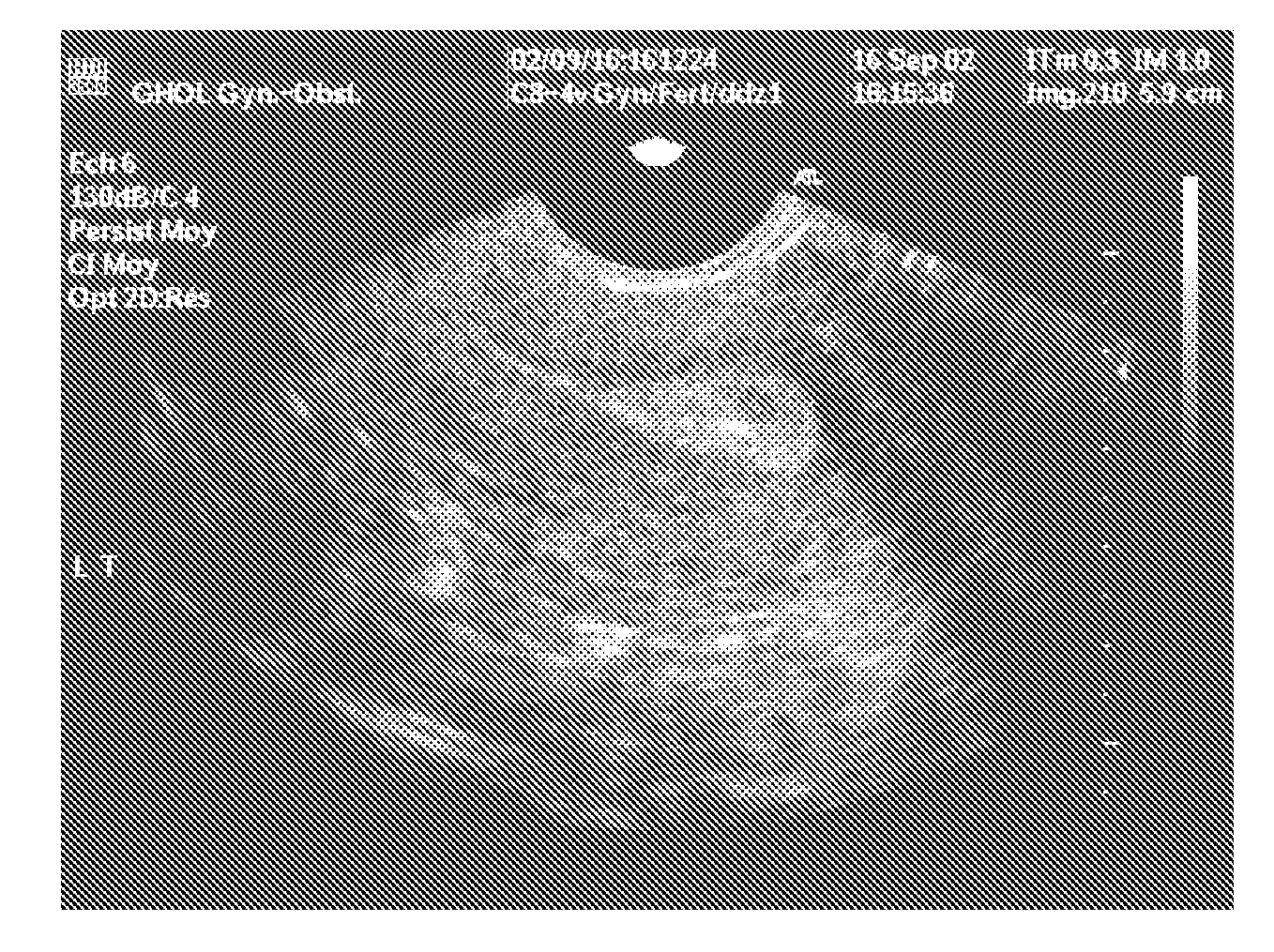Medium for contrast enhancement or convenience for ultrasonic, endoscopic, and other medical examinations
a technology of contrast enhancement and ultrasonic, which is applied in the field of medium for contrast enhancement or convenience for ultrasonic, endoscopic, and other medical examinations, can solve the problems of inconvenient and messy fluid puddles in the examination area, inconvenient use of intrauterine infusion of nacl or other solution as ultrasound contrast enhancer, and further source of discomfort for patients, etc., to achieve convenient use, less pressure, and constant infusion
- Summary
- Abstract
- Description
- Claims
- Application Information
AI Technical Summary
Benefits of technology
Problems solved by technology
Method used
Image
Examples
example 1
Contrast Ultrasound —53 Patients
[0080]Design—Prospective pilot feasibility study in infertile women and women with dysfunctional uterine bleeding (DUB).[0081]Materials and Methods —53 women consulting for infertility (n=27) or DUB (n=26) were studied. After a conventional vaginal ultrasound was performed, all underwent contrast ultrasound examination. For this, 3-7 cc of a negative (black) phase shifting uterine contrast medium (“PSCM”) was infused in the uterine cavity using a 3.5 Frydman embryo transfer catheter. The uterine catheter was then removed and another vaginal ultrasound was performed.[0082]Results—In all women, the uterine cavity remained distended for ≧3 minutes, leaving a ≧3.5 mm thick “black” interface in the uterine cavity. In all patients uterine distension and medium had disappeared after 10 minutes. In 21 of 26 women presenting with DUB, contrast ultrasound revealed an intrauterine pathology that was subsequently confirmed by hysteroscopy and histology. In 14 of ...
example 2
Endoscopic Vision of the Uterine Cavity —7 Patients
[0085]Design—Pilot feasibility study in women scheduled for surgical hysteroscopy, using optically-transparent phase shifting medium (“PSM”).[0086]Materials and Methods—The PSM was tested in 7 women immediately before a scheduled surgical hysteroscopy. 7-10 cc of PSM was infused in the uterine cavity using a common embryo transfer catheter after patients underwent cervical dilatation. After the embryo transfer catheter was removed, the conventional hysteroscope was introduced and endoscopic exploration undertaken without connecting the infusion system. After direct visualization was completed, conventional hysteroscopy was conducted using an infusion of a distending solution.[0087]Results—The uterine cavity, slightly distended by the viscous nature of the PSM at the time of insertion, was easily explored with panoramic endoscopy. The viscous nature of the PSM also prevented it from mixing with blood originating from the uterine muco...
example 3
Positive and Negative Contrast Uterine Gels
[0091]A negative contrast gel would be particularly appropriate for use to enhance the contrast of uterine ultrasounds. Such a negative medium would facilitate the diagnosis of uterine pathologies such as sub-mucosal fibroids, endometrial polyps, endometrial synechiae (scars), uterine malformations and all uterine pathologies having endometrial repercussion and / or ultrasound expression. Potentially, the negative gel can permit imaging part or all of one or both Fallopian tubes.
[0092]Uterine exposure to progesterone or progestins, such as with oral contraception, is likely to prolong the presence of the gel because of the utero-relaxing properties of progesterone and progestins. And other possible applications will be sought for enhancing negative contrast of other forms of imaging of the uterus and tubes, including for example by MRI and CT scans.
[0093]Positive contrast media will also be useful. A positive contrast formulation likely will ...
PUM
 Login to View More
Login to View More Abstract
Description
Claims
Application Information
 Login to View More
Login to View More - R&D Engineer
- R&D Manager
- IP Professional
- Industry Leading Data Capabilities
- Powerful AI technology
- Patent DNA Extraction
Browse by: Latest US Patents, China's latest patents, Technical Efficacy Thesaurus, Application Domain, Technology Topic, Popular Technical Reports.
© 2024 PatSnap. All rights reserved.Legal|Privacy policy|Modern Slavery Act Transparency Statement|Sitemap|About US| Contact US: help@patsnap.com










